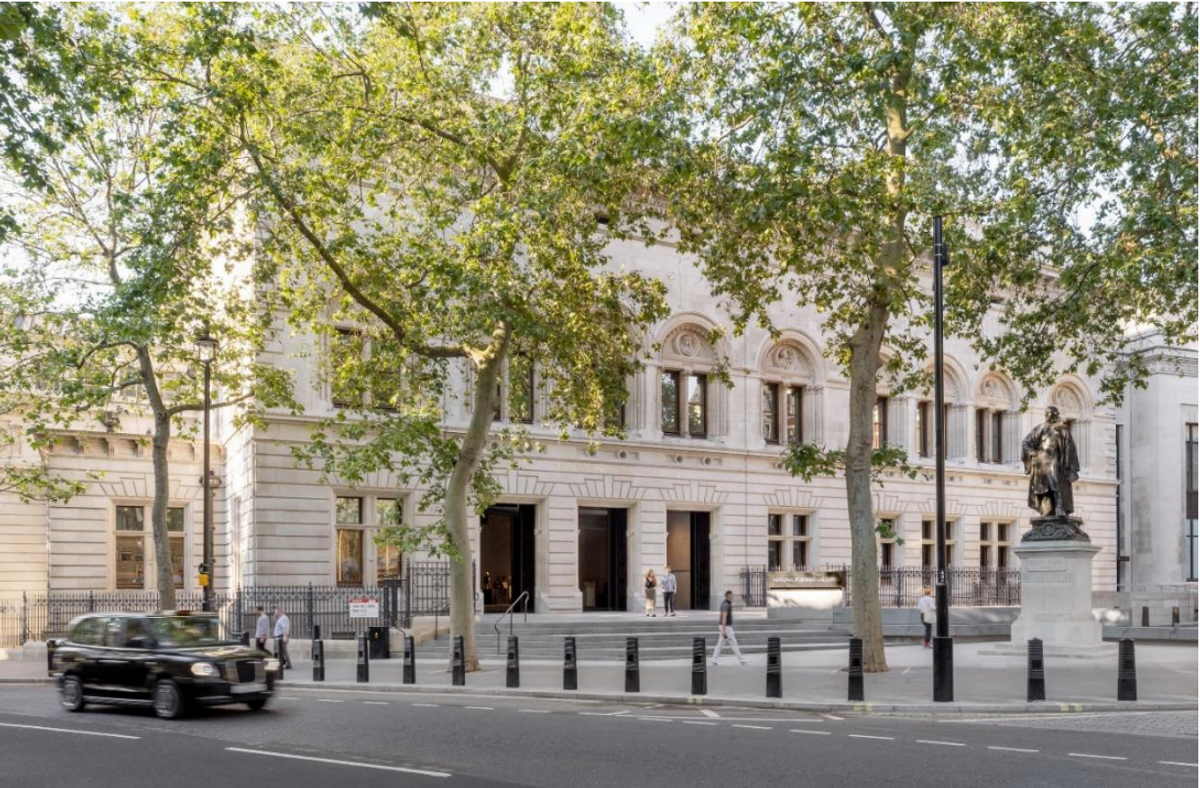The return of the National Portrait Gallery (NPG) to Charing Cross Road has been long-awaited. The three-year redesign looks a success. The sparkling new forecourt will certainly be more welcoming than the National Gallery’s pokey entrances in Trafalgar Square. I once hoped the two galleries might fuse, with the NPG offering a chorus line of British celebrities, cocking a snook at the pompous Old Masters next door. This is not to be, but the three-year absence has not been idly wiled away.
The NPG spent lockdown away from London. It has long exported works to Beningbrough in Yorkshire, Bodelwyddan in Wales and Montacute in Somerset. Now more impressive tours have taken place. The NPG has sent as many as 100 paintings to venues in Derby, Belfast, Northampton, Salford, St Andrews, Canterbury, Swansea and even Amsterdam. Given that the gallery sits atop a mountain of some 220,000 works, it has plenty to spare.
It will be intriguing now to see how the NPG handles other aspects of the new museum age. Presenting a nation to itself in the form of a human face is a delicate and selective matter. The gallery’s current website, like the hoardings round its building site, is bending over backwards to be inclusive. You would think Britain was a nation from which white males had been banished, unless they are monarchs or Beatles. It was also hard, in the former hang, to place faces in their historical context, given the stark lack of background information.
Where the NPG has scored is in its partnerships. With the V&A in Dundee and East London and the Tate in Liverpool and St Ives, the confinement of the bulk of the UK’s cultural treasures in the capital is hopefully dissipating. Museums are already under pressure to return objects to countries from which the age of empire stripped them. This should allow at least some to be seen in the place of their creation. The same might be said to apply to British works given “to the nation” from churches, houses and families, but which are nowadays enjoyed principally by London mice.
State hoarding
Art exists to be experienced, not hoarded by the state. The National Gallery used to boast that all its works were on display. I recall wandering its basement gazing at rack upon rack of gloomy Old Masters. It now has some 2,300 paintings, many hidden, and I cannot see why those in store cannot be in regional museums.
London’s most secret gallery is the government’s own art collection, whose vaults now possesses 14,700 works by British artists. It loans some but most are stored for use as “soft power”, so it is claimed, in civil service offices and embassies.
Meanwhile the Tate sits atop an iceberg of some 60,000 paintings, which it stashes in its basements like a curatorial Dr No. The Millbank gallery does justice only to Turner, largely thanks to the artist’s contractual insistence. But enthusiasts for Samuel Palmer, for instance, will be lucky to find one or two ever on display. A decade ago an attempt to relocate some of the Tate’s impressive store of Pre-Raphaelites to relevant National Trust properties got nowhere.
As custodians of quantities of treasures supposedly in the public domain—I am told no one knows how many the British Museum has—these galleries are steeped in metropolitanism. Their staff see themselves as guarding buildings as much as collections, their primary duty being to conservation and study. Lord Eccles, when chairman of the British Museum, said he was in favour of charging for entry as the museum was essentially a university for scholars.
Compare this with Italy, where Florence’s policy of “Uffizi diffusi” now has paintings floating from one city to another, often displayed alongside local works to set them in context. Some 30 Uffizi exhibitions have been held across Tuscany alone since 2021. These have proved so popular the gallery is setting up four permanent outposts, liberating hundreds of pictures from its storerooms.
It is true that digitisation means that entire collections can now be viewed online. The virtual realm has greatly expanded our awareness of what treasures lie hidden beneath London’s soil. Yet, as the National Portrait Gallery has shown over the past three years, nothing equals the authenticity of the real thing.
The NPG’s pictures were never intended for just Londoners and tourists to enjoy. The faces of the nation belong to the nation, which has galleries the length and breadth of the land where they can be shown. The NPG should become the dispersed museum of the regions, vastly enriching the cultural life of Britain. And London need not even notice.
• Simon Jenkins is an author and newspaper columnist


